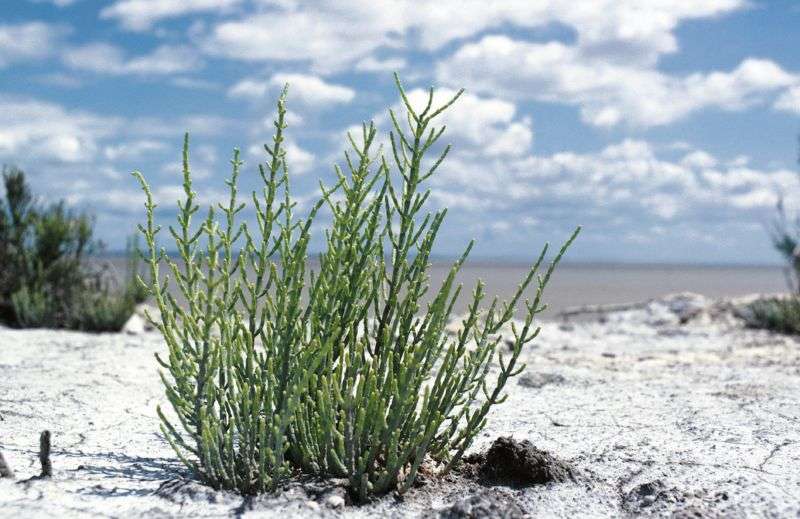
Oil from humble saltwater plant blended with jet fuel on Etihad Airways flight

On Wednesday, an Etihad Airways Boeing 787 in Abu Dhabi embarked on a roughly seven-hour flight to Amsterdam with its tank full of a mixture of jet fuel and biofuel. The biofuel was derived from oil pressed out of Salicornia plants, which require saltwater to grow.
Gulf News reported that a full 50 percent of the jet fuel needed to take the plane to its destination was biofuel, which is an extraordinarily high ratio of biofuel to jet fuel, if this report is correct. Ars contacted Etihad Airways to confirm this number, and we will update the story when we receive a response.
Previous notable flights using biofuel have included a Qantas flight that used a 10-percent blend of mustard seed oil, a Virgin Atlantic flight that used a 5-percent blend of fuel made from industrial waste gas, an Alaska Airlines flight that used a 20-percent blend of fuel made from waste wood from Pacific Northwest timber harvests, and a series of United Airlines flights that used a 30-percent blend of biofuel from various sources.
International fuel-specification groups have set a limit on biofuel blending (PDF), requiring that a plane’s fuel be no more than 50 percent biofuel due to safety concerns. Generally, cost is a limiting factor for companies synthesizing and blending biofuels.
The flight yesterday was years in the making, supported by research from the Sustainable Bioenergy Research Consortium (SBRC) at the Masdar Institute in Abu Dhabi.
Fish do their part
SBRC developed the biofuel that was used on the Etihad Airways flight by combining the Salicornia crop with a fish and shrimp farm in Masdar City, right next door to the Abu Dhabi International Airport. Salicornia is a genus of succulent that grows in saltwater, meaning it doesn’t consume valuable potable water in the desert. The plants are also fertilized by the fish, and any unused fertilizer water is diverted to a mangrove forest adjacent to the two-hectare Salicornia plot.
“This further removes nutrients and provides valuable carbon storage before the naturally filtered and treated effluent is discharged back into the sea,” Etihad Airways wrote.
A press release from Etihad Airways said that using the Salicornia biofuel “significantly reduces life-cycle carbon dioxide emissions compared to fossil fuel,” but it did not say by how much. Processing biofuel results in carbon dioxide emissions, and more intensive processing requirements for different biofuel feedstocks can reduce the advantage that a biofuel has over fossil fuels. Biofuels also produce carbon dioxide emissions when they’re burned, but they are offset by the carbon dioxide that the biofuel crop consumes while it grows.
Etihad Airways says that “the biofuel is blended directly with jet fuel and does not require any modifications to aircraft, engines, or airport fueling delivery systems.”
The airline said that it expects the SBRC to expand its operations to 200 hectares’ worth of Salicornia over the next few years until it’s ready for full commercialization.




